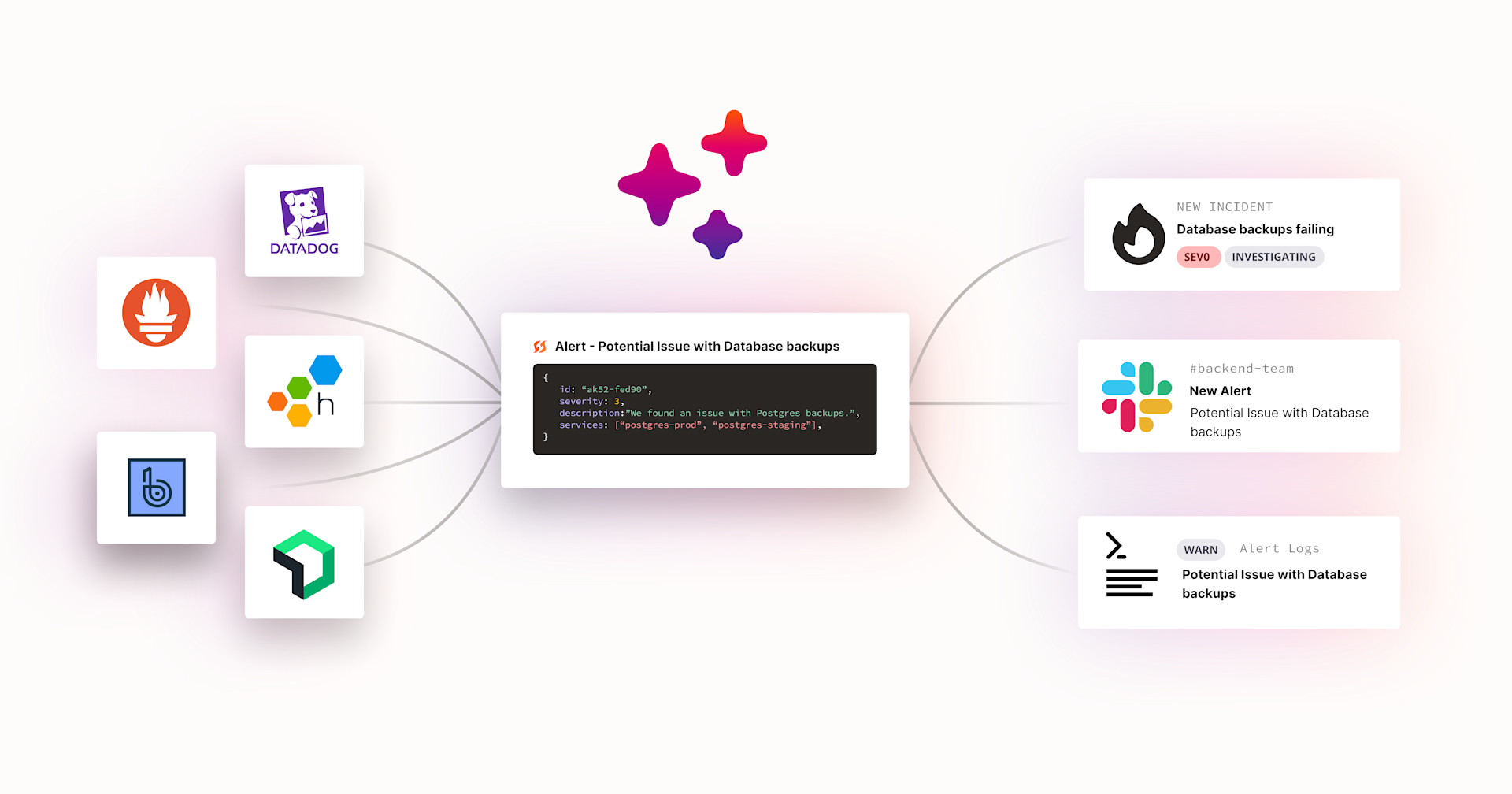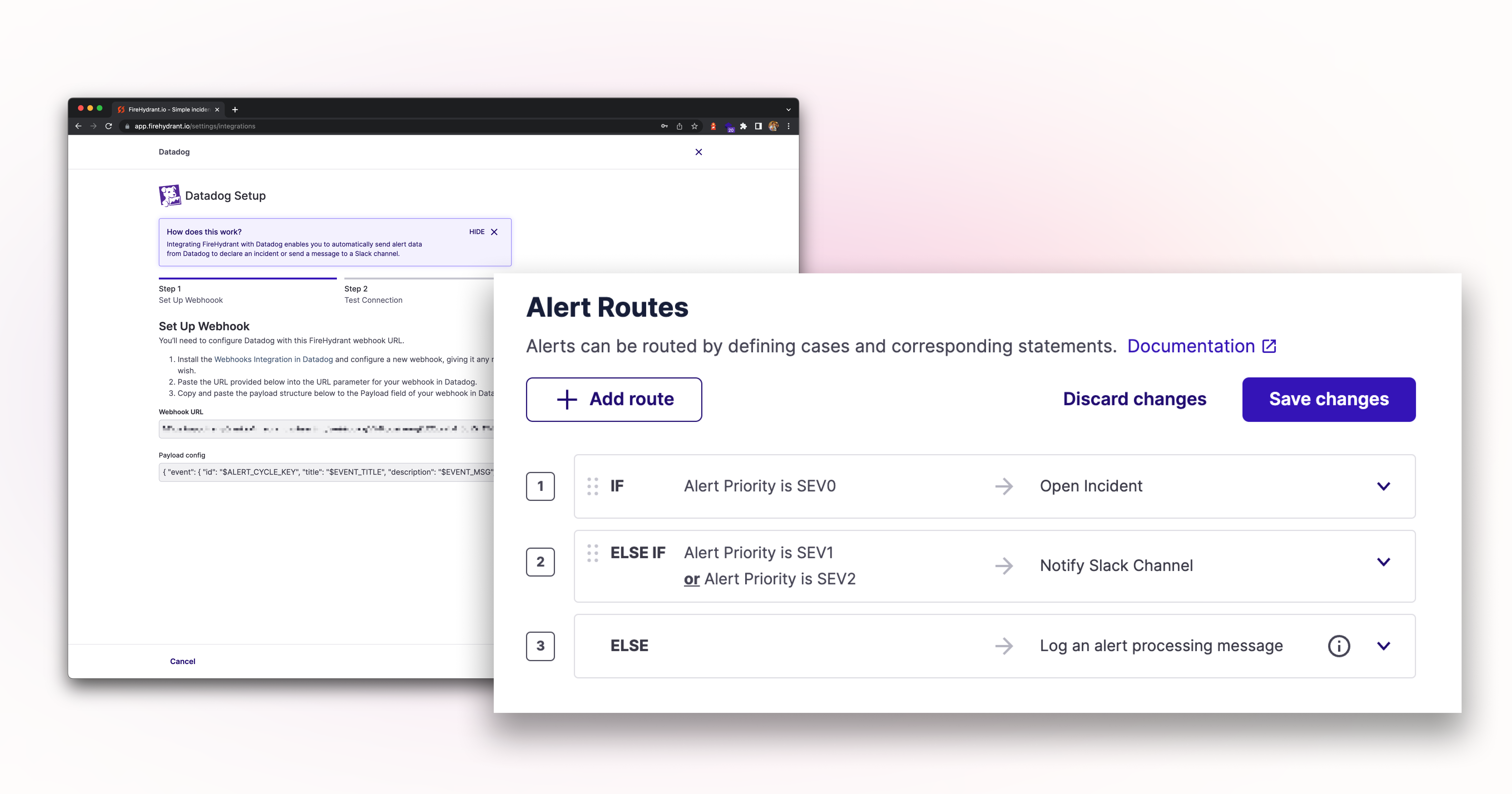The fastest and most robust path to incident declaration from monitoring tools
We’re making it even easier for teams to automate incident response. The moment a monitoring tools smell smoke, you can have an incident opened before you blink. Teams can now create decisive rules for triggered alerts in their favorite monitoring tools.

By Joel Smith on 5/18/2023

Here’s a crazy question: why do we still require a human to manually declare an incident for the things that we know are incidents? If we have enough confidence to build SLOs and high-severity alert routes for these specific scenarios, why are we still asking a human to confirm it’s an incident and get the assembly process in motion? Isn’t that just another button to push when we could be problem solving instead?
FireHydrant has long been on a mission to automate the predictable steps and processes that burden or distract engineers with unnecessary overhead during an incident. And our recent release of automatic incident declaration and Alert Routes squarely took aim at the declaration process. But today we’re going further. A lot further.
Today we’re releasing a set of integrations for your favorite monitoring tools that allow you to automatically open incidents based on conditions you define, eliminating guesswork for your on-call teams and expediting your path to problem solving. Integrations are now available for DataDog, Honeycomb, New Relic, Prometheus’ AlertManager, and BugSnag — and they’re incredibly easy to set up. These integrations take advantage of Alert Routes so you can leverage any attribute of an alert to automatically open incidents, route Slack messages to the right teams, or simply ignore the alert entirely.

To get started, head to the integrations tab in your dashboard and click the monitoring tool you’d like to add. You’ll be guided through the setup of adding the webhook to your monitoring solution. Check out the docs for each integration to learn how to add and test your webhooks.
See FireHydrant in action
See how service catalog, incident management, and incident communications come together in a live demo.
Get a demo